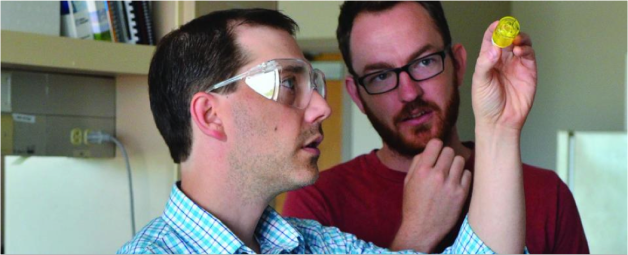Today, Lawrence Berkeley National Laboratory’s (Berkeley Lab) Cyclotron Road program announced the selection of its second cohort of innovators, whose projects include next generation batteries, advanced materials, biomanufacturing, and solar technologies.
“When we started Cyclotron Road less than two years ago, it was an experiment. Now with the second cohort and significant external funding, the concept has been firmly established,” said Berkeley Lab Deputy Director Horst Simon. “As the quality and range of applications in the second cohort show, Cyclotron Road has closed a gap in our spectrum of tools for energy technology innovation.”
Cyclotron Road recruits entrepreneurial researchers and embeds them at Berkeley Lab for up to two years in a mentored technology entrepreneurship program. During that time, the program guides its cohort members as they work to achieve focused technology development objectives in a discrete period of time to facilitate the transition from lab to market.

Chris Kaffer (foreground) and Philip Taynton are among nine innovators that have been selected for Cyclotron Road’s second cohort. They are developing fully recyclable advanced composites with reduced cure times for improved manufacturing efficiency.
Nine new members make up the new cohort, coming from as far away as New York and Oxford, England and all are first time entrepreneurs. While some recently received their Ph.Ds., others have spent more time in industry, giving the cohort a broad spectrum of experience.
“The United States needs a whole new generation of technology entrepreneurs to lead the way in building the global clean energy economy. But as venture capital investment in clean tech has dropped significantly in recent years, I fear that this generation’s brilliant minds may seek opportunity in other industries even at this critical moment for the clean energy sector,” said David Danielson, Department of Energy Assistant Secretary for the Office of Energy Efficiency and Renewable Energy (EERE). “Cyclotron Road is a critical new DOE supported platform upon which game changing new clean energy startups can be built. Its first cohort participants are already showing tremendous success, with two projects in the program already having been awarded funding for their ideas by ARPA-E. With the program’s second cohort we are announcing today, EERE and Lawrence Berkeley National Lab are already building on an exciting track record of success.”
After just one year of funding from EERE, the first cohort of innovators made tremendous technical progress, attracting nearly $5 million in follow-on funding through competitive grants and private investments, and avoiding millions more in R&D capital expenditures. Over that time, they have worked closely with more than 20 Berkeley Lab scientists.
“We’re thrilled to begin supporting these innovators here at Berkeley Lab,” said Cyclotron Road director Ilan Gur. “We’ve been incredibly impressed with the progress our first cohort has made over the past year and look forward to working with the second cohort to drive their technologies forward.”
The second cohort was selected after a nationwide call for applications followed by a rigorous four-month selection process. They are expected to begin work embedded at Berkeley Lab in May of this year.
Read full bios and project descriptions for this new cohort on the Cyclotron Road website.
# # #
Lawrence Berkeley National Laboratory addresses the world’s most urgent scientific challenges by advancing sustainable energy, protecting human health, creating new materials, and revealing the origin and fate of the universe. Founded in 1931, Berkeley Lab’s scientific expertise has been recognized with 13 Nobel prizes. The University of California manages Berkeley Lab for the U.S. Department of Energy’s Office of Science. For more, visit www.lbl.gov.
The Cyclotron Road program is funded by the U.S. Department of Energy’s Office of Energy Efficiency and Renewable Energy’s Advanced Manufacturing Office (AMO). AMO supports applied research, development, and demonstration of new materials and processes for energy efficiency in manufacturing as well as platform technologies for the manufacturing of clean energy products. Visit energy.gov/eere/cemi to learn how the Department is boosting U.S. competitiveness in clean energy manufacturing.
DOE’s Office of Science is the single largest supporter of basic research in the physical sciences in the United States, and is working to address some of the most pressing challenges of our time. For more information, please visit science.energy.gov.
